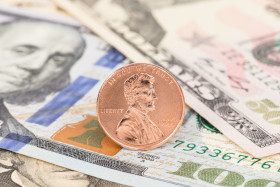The US dollar is weakening against a few currencies on Thursday as new labor data confirms that the Covid-19 pandemic is beginning to have a negative effect on the strong labor market. But the decline was capped by the Federal Reserve announcing temporary dollar swap lines with nine central banks for several months. Despite the dramatic impact the coronavirus has had on the worldâs largest economy, the US dollar has been the lone bright spot in international markets.
According to the Bureau of Labor Statistics (BLS), jobless claims jumped to 281,000 in the week ending March 14, up from 211,000 in the previous week. This is the highest reading since September 2, 2017. The market had anticipated a reading of 220,000.
The four-week moving average climbed to 232,250, up 16,500 from a week ago. This is the biggest level since January 27, 2018. The continuing jobless claims jumped to 1.701 million, falling short of projections of 1.725 million.
With US companies only just recently announcing layoffs and temporary closures, analysts are warning that there could be historic spikes in the coming week. Some say next weekâs jobless claims could top two million.
On Thursday, the US central bank announced that it had established dollar swap lines with nine central banks to help reduce the liquidity blow in global US dollar funding markets. The Fed says the new facilities will support about $60 billion swap lines with Australia, Brazil, Mexico, Singapore, South Korea, and Sweden. Also, the lines will total another $30 billion for Denmark, New Zealand, and Norway. The measures are scheduled to last for six months.
These facilities, like those already established between the Federal Reserve and other central banks, are designed to help lessen strains in global US dollar funding markets, thereby mitigating the effects of these strains on the supply of credit to households and businesses, both domestically and abroad.
To kick off the trading session, US financial markets were relatively mixed and not as volatile: the Dow Jones slipped 72 points, the S&P 500 dipped 0.4%, and the Nasdaq rose 0.2%. But, as we have learned in recent weeks, equities could spike or crater at a momentâs notice.
The US Dollar Index, which measures the greenback against a basket of currencies, surged 0.61% to 101.78, from an opening of 100.79. The Index has advanced more than 4% over the last week, lifting its year-to-date gain to just under 6%.
The USD/CAD currency pair tumbled 0.32% to 1.4457, from an opening of 1.4506, at 13:33 GMT on Thursday. The EUR/USD declined 0.96% to 1.0811, from an opening of 1.0914.
If you have any questions, comments, or opinions regarding the US Dollar, feel free to post them using the commentary form below.
